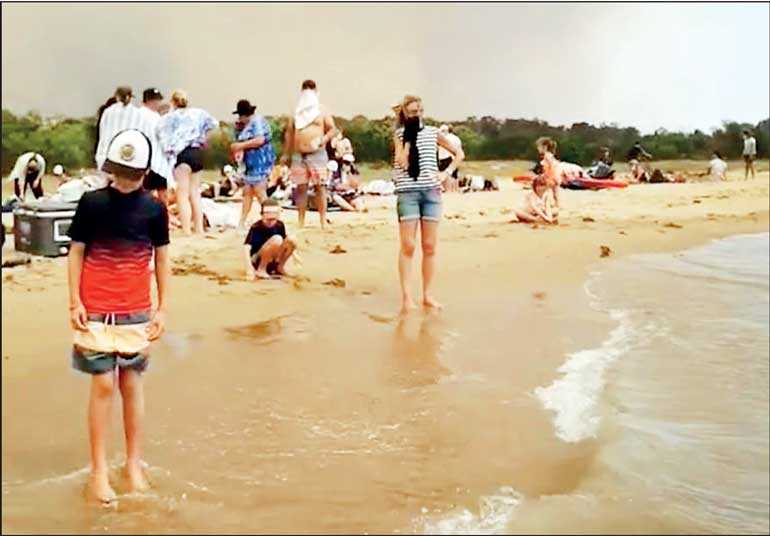Monday Dec 08, 2025
Monday Dec 08, 2025
Wednesday, 1 January 2020 00:00 - - {{hitsCtrl.values.hits}}

Melbourne/Sydney (Reuters): Thousands swarmed to beaches on Australia’s east coast on Tuesday to escape fierce wildfires bearing down on several seaside towns, as the government readied naval vessels and military helicopters to aid firefighting and evacuations.
Government officials called for Australian military support and assistance from US and Canadian fire crews as authorities confirmed two people had died overnight, taking to 11 the total deaths in wildfires since the beginning of October.
The huge bushfires have destroyed more than four million hectares (10 million acres), with new blazes sparked into life almost daily by extremely hot and windy conditions in bushland left tinder dry after a three-year drought.
Fuelled by searing temperatures and high winds, more than 200 fires are now burning across the southeastern states of New South Wales and Victoria, threatening several towns and snapping their power, mobile and internet links.
“This is absolutely one of the worst fire seasons we’ve seen,” Shane Fitzsimmons, commissioner of the NSW Rural Fire Service, told a briefing in Sydney.
“It’s going to be a very long, difficult dangerous night still ahead. It’s going to be another difficult day again tomorrow.”
Authorities said the main firefront was moving up the coast and warned those in its path to seek shelter close to the beach.
About 4,000 people in the town of Mallacoota in Victoria headed to the waterfront after the main road was cut off. Those who could not make it there scrambled for shelter in a gymnasium and other public buildings, as emergency sirens wailed.
Some of those trapped in the town posted images of blood-red, smoke-filled skies on social media. One beachfront photograph showed people lying shoulder-to-shoulder on the sand, some wearing gas masks.
Several hundreds of kilometres north, the Jervis Bay tourist spot famed for having the whitest sand beach in the world, was shrouded in darkness in the afternoon as massive fires burned, with conditions expected to worsen.
The blazes were also generating their own weather patterns, with erratic winds, dry lightning and a significantly faster spread in different direction, fire authorities said.
The fires have been spread across four states, with fronts stretching hundreds of kilometres in some cases, affecting many towns and rural areas.
The two people who died overnight were believed to have been a father and son protecting their property near the town of Cobargo in New South Wales, police said, with a third missing, feared dead, while in Victoria, four more were unaccounted for.
Bushfires burned on the outskirts of Sydney, cloaking the harbour city in smoke ahead of a fireworks display planned for New Year’s Eve.
Authorities said the fireworks would go ahead, despite some public calls for cancellation in solidarity with fire-hit areas in the state.